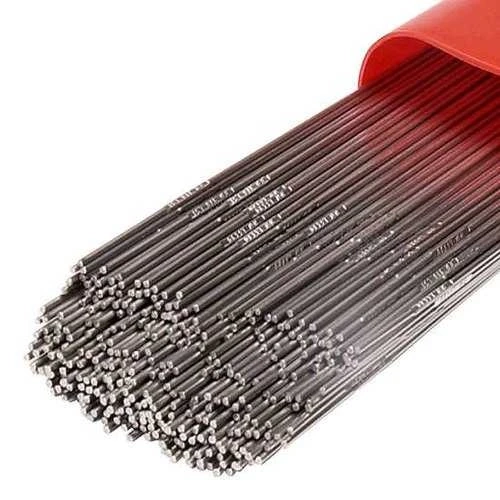Stainless steel filler wire is a type of welding wire used for welding stainless steel components together. It is a metal alloy made up of chromium, nickel, and other elements that give it its high corrosion resistance and strength. The composition of the filler wire will vary depending on the type of stainless steel being used.
The most common type of stainless steel filler wires is either 308L or 316L. These types of filler wires are designed for welding austenitic stainless steel with a minimum of 8% nickel and 18% chromium. This type of filler wire is generally used when welding stainless steel components that are exposed to corrosive environments or high temperatures.
The filler wire is fed through a welding gun and is then heated using an arc welding process. This heating process causes the filler wire to become molten. As the filler wire is applied to the area that is being welded, it forms a bond with the two pieces of stainless steel. This bond provides a strong and reliable weld.
Benefits of Stainless Steel filler wire benefits.
• Stainless steel filler wire provides excellent corrosion resistance, allowing it to be used in many different applications and industries.
• It has a high melting point that makes it suitable for welding in extremely hot environments.
• Stainless steel filler wire has a low thermal expansion rate, making it ideal for welding in areas where thermal expansion is a concern.
• It has a high electrical conductivity, which helps ensure efficient arc welding.
• It is highly resistant to oxidation and corrosion, and has a high resistance to most acids, alkalis, and other corrosive substances.
• Stainless steel filler wire has excellent formability and is easy to fabricate.
• It is highly resistant to stress corrosion cracking, which is why it is often used in the oil and gas industry.
• Stainless steel filler wire is also cost-effective and easy to procure.
• The low-carbon content of stainless steel filler wire helps to reduce the risk of welding defects.
• Stainless steel filler wire is easy to handle and store and is relatively cheap compared to other materials.
• It is non-magnetic and does not require preheating before welding.
• The high ductility of stainless steel filler wire allows for smooth and even welds and reduces the risk of cracking.
• It is resistant to high temperatures, allowing it to be used in applications such as automotive exhaust systems.
• Stainless steel filler wire has a high strength-to-weight ratio, making it ideal for a variety of applications.
• It is highly resistant to a variety of environmental conditions, including weathering and UV radiation.
• It is easy to clean and maintain, and has long-lasting durability.
• Stainless steel filler wire is highly resistant to oxidation, making it ideal for welding in extreme temperatures.
• It is a low-cost material that is easy to procure and use.
• It is a highly durable material that can withstand extreme wear and tear.
• It is a versatile material that can be used for a variety of welding applications.


